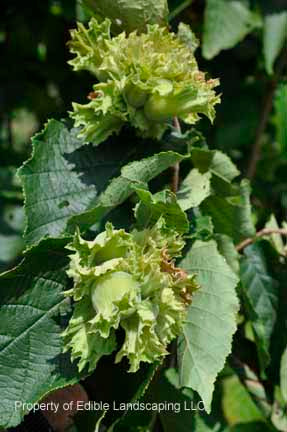
Winkler American Filbert
Click here for Filbert Care Guide
Corylus americana - Winkler American Filbert
Due to import restrictions we are unable to ship Filberts aka Hazelnut to CA, OR.
Winkler Native American Filbert is a hard to find self fertile bush. It produces larger nuts and is more productive than most native seedlings. Originally from Iowa, introduced in 1918. The bush 6' tall and wide is not susceptible to blight. Ease of care and dependable bearing makes this plant a highly sought after variety. Its small size and good looks make it popular with home owners. Space 8' circle. Zone 4-7
Plant Characteristics
- Pest Resistance: Excellent
- Disease Resistance: Excellent
- Drought Tolerance: Good
- Heat Tolerance: Very Good
- Humidity Tolerance: Excellent
- Sun Tolerance: Very Good
- Wet Soil Tolerance: Fair
- Shade Tolerance: Good
- No‑Spray Suitability: Excellent
- Salt Tolerance: Poor
- Fresh (edible quality): Very Good
- Deer Resistance: Fair
- Thorns: No
- Plant Type: Shrub
- Soil Type: Adaptable
- Edible Type: Nut
- Self‑Fertile: Yes
This information is accurate to the best of our knowledge, comments/opinions are always welcome